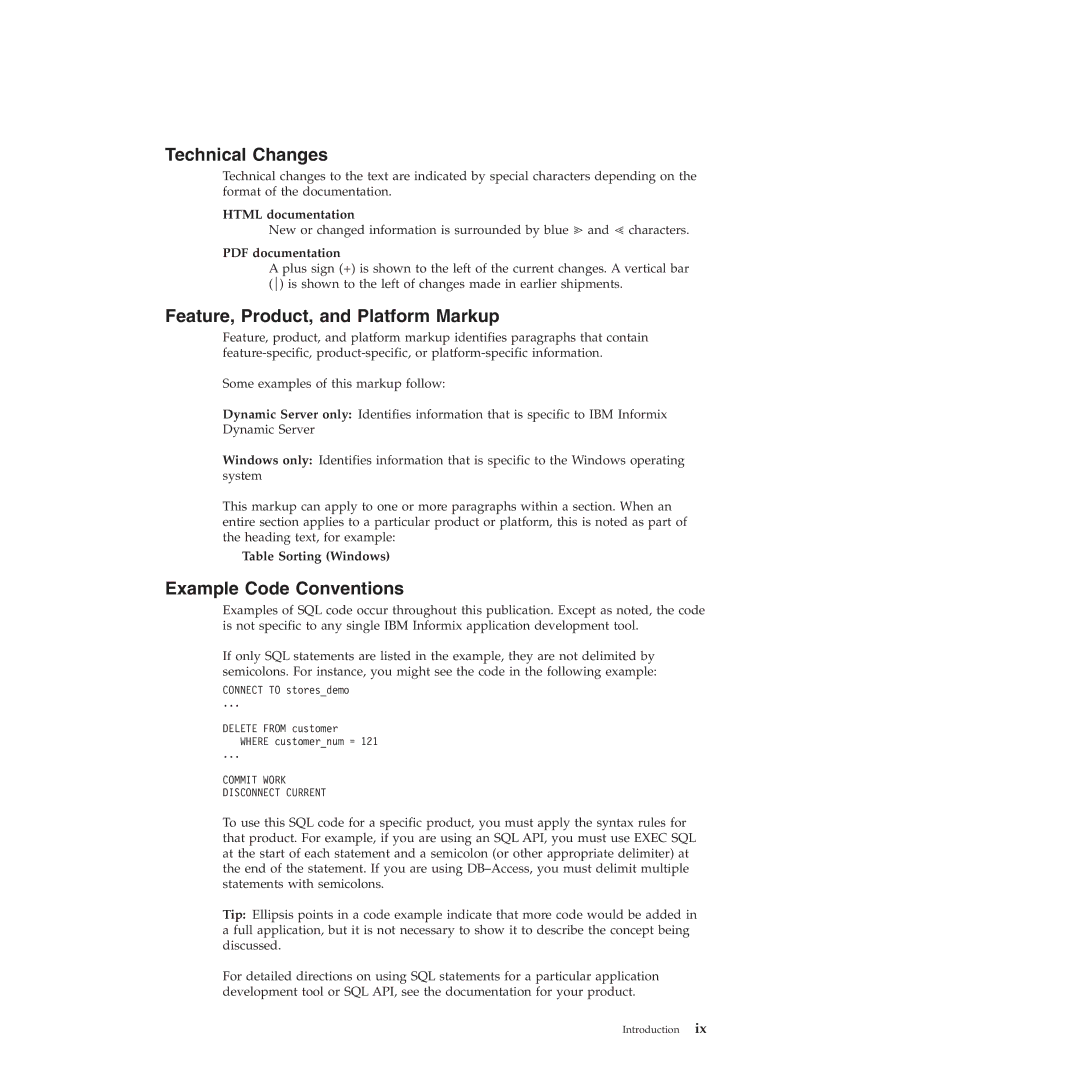Technical Changes
Technical changes to the text are indicated by special characters depending on the format of the documentation.
HTML documentation
New or changed information is surrounded by blue @ and ! characters.
PDF documentation
A plus sign (+) is shown to the left of the current changes. A vertical bar (│) is shown to the left of changes made in earlier shipments.
Feature, Product, and Platform Markup
Feature, product, and platform markup identifies paragraphs that contain
Some examples of this markup follow:
Dynamic Server only: Identifies information that is specific to IBM Informix Dynamic Server
Windows only: Identifies information that is specific to the Windows operating system
This markup can apply to one or more paragraphs within a section. When an entire section applies to a particular product or platform, this is noted as part of the heading text, for example:
Table Sorting (Windows)
Example Code Conventions
Examples of SQL code occur throughout this publication. Except as noted, the code is not specific to any single IBM Informix application development tool.
If only SQL statements are listed in the example, they are not delimited by semicolons. For instance, you might see the code in the following example:
CONNECT TO stores_demo
...
DELETE FROM customer WHERE customer_num = 121
...
COMMIT WORK
DISCONNECT CURRENT
To use this SQL code for a specific product, you must apply the syntax rules for that product. For example, if you are using an SQL API, you must use EXEC SQL at the start of each statement and a semicolon (or other appropriate delimiter) at the end of the statement. If you are using
Tip: Ellipsis points in a code example indicate that more code would be added in a full application, but it is not necessary to show it to describe the concept being discussed.
For detailed directions on using SQL statements for a particular application development tool or SQL API, see the documentation for your product.
Introduction ix
